About GCRL
About > Overview

The Gulf Coast Research Laboratory (GCRL) is a research and teaching unit of The University
of Southern Mississippi dedicated to the advancement of scientific discovery and promotion
of academic growth in the fields of marine biology and coastal sciences for the betterment
of society, the wise use of natural resources, and the advancement of sound economic
development. Formally established by the Mississippi Legislature in 1948 and 1950,
the GCRL is the State’s designated marine laboratory, assigned by the State to:
- Promote the study and knowledge of science including the natural resources of the State of Mississippi and to provide for the dissemination of research findings and specimens from the Gulf Coast area.” (Miss. Code Ann. §37-101-21);
- Study all estuaries and bays deemed to be nurseries” and “… may recommend the establishment of nursery grounds in the estuaries and bays if necessary to protect the state’s fishing resources” (Miss. Code Ann. §49-15-315); and,
- Be assigned for the use … by the Mississippi Department of Marine Resources” (Miss. Code Ann. §37-101-19) and to be utilized “to the fullest extent possible” by the Mississippi Commission on Marine Resources (Miss. Code Ann. § 49-15-15).
In 1988, the GCRL transitioned from an independent laboratory to a research and teaching unit of the University of Southern Mississippi.
History of the Gulf Coast Research Laboratory by Joyce M. Shaw
A Response of the Gulf Coast Research Laboratory to Hurricane Katrina: A Personal Perspective by William E. Hawkins
We are one of the largest marine laboratories in the southeastern United States.
Approximately 200 scientists and support staff are employed through the GCRL and conduct research and teaching in a diverse array of laboratory and academic facilities on our 50-acre Halstead campus and 224-acre Cedar Point site. As a university marine laboratory, GCRL’s focus is on research and academics associated with the marine and coastal environment, with the goals of not only advancing scientific knowledge but also promoting economic development - through sustainable fisheries, aquaculture, coastal restoration and conservation - and higher education for workforce development. Those mission components are achieved through the University’s GCRL-based Division of Coastal Sciences (COA), Center for Fisheries Research and Development (CFRD), Thad Cochran Marine Aquaculture Center (TCMAC), and Marine Education Center (MEC). Specific research emphases among those units include:
- Coastal Ecology - investigating biodiversity and the linkages between environmental processes of the coastal zone and the populations and communities of organisms therein
- Marine Aquaculture - research and development in the culture of marine organisms for seafood production and restoration
- Fisheries and Fisheries Oceanography - collaborative and independent research on fisheries ecology, oceanography, management and Essential Fish Habitat
- Aquatic Health - understanding the biological, chemical and physical factors affecting the health of marine and coastal organisms and the ecosystems which support them
Since its inception, a primary objective of the GCRL has been to provide scientific support to the State of Mississippi for research and management needs pertaining to the State’s marine and coastal resources. To that end, GCRL faculty, staff and students collaborate closely with partners at the Mississippi Department of Marine Resources (MDMR) and Mississippi Department of Environmental Quality (MDEQ) and serve on committees and panels which provide science-based guidance to the Mississippi Commission on Marine Resources (MCMR). This support also extends nationally through our scientists’ participation on regional and federal committees for entities such as the Gulf States Marine Fisheries Commission, the Gulf of Mexico Fishery Management Council, the NOAA Marine Fisheries Initiative (MARFIN) Panel, and the NOAA Highly Migratory Species Advisory Panel.
Specific to the State of Mississippi, current and historical support provided through GCRL includes:
- Creation of the Mississippi Stock Assessment Panel in coordination with MDMR, with routine stock assessments to support sound management decisions by the Mississippi Commission on Marine Resources
- Proposal development for and collaboration on the State’s various National Fish and Wildlife Foundation projects through the Gulf Environmental Benefit Fund to better understand and restore natural resources impacted by the BP oil spill; these include programs for red snapper and reef fish, oysters and marine mammals
- Support for oyster restoration through the USM-led Mississippi Based RESTORE Act Center of Excellence (MBRACE) and the TCMAC oyster aquaculture program
- Collaborative long-term monitoring programs through CFRD for all life-history stages of finfish, shrimp and crabs in Mississippi coastal waters to support stock assessments and management efforts
- Marsh plant propagation research and development (and associated nursery) and landscape modeling to support State marsh restoration efforts
- Shellfish sanitation testing for Mississippi oysters to ensure compliance with federal regulations designed to protect public health (GCRL is the only conforming shellfish testing laboratory in Mississippi.)
- Fish identification training for MDMR Enforcement
- Large pelagics program to inform management of offshore marine species (billfishes, tunas, sharks) and habitats important to Mississippi’s fishing-based economy (e.g., Mississippi Gulf Coast Billfish Classic)
- Public outreach and education through MEC K-12 and citizen scientist education programs
- Establishment of acoustic monitoring protocols and project implementation for coastal finfish species to more finely delineate Essential Fish Habitat and Critical Habitat for permitting purposes
- Advisement and expertise on numerous Technical Working Groups for the Deepwater Horizon NRDA and monitoring for the State’s oyster reef and inshore artificial reef Early Restoration Projects
- Circulation & larval fish surveys and modeling to better understand recruitment patterns for important estuarine-dependent species
- Research and development on finfish, oyster, shrimp and crab aquaculture for seafood production and/or restoration to support economic development and enhancement of overfished stocks
- Analytical, monitoring, observation & other scientific services outside the scope
of MDMR and MDEQ capacity, including expertise in:
- disease & parasitology (e.g., Dermo)
- advanced & customized statistical analyses
- population genetics
- benthic & microbial ecology
- toxicology
- ecosystem & landscape modeling
- fish reproduction, age/growth & feeding
- geochemistry & water quality testing
- Workforce development through COA undergraduate and graduate academic programs
- Research, academic & logistical resources through the Gunter Library, GCRL Museum and USM vessel fleet
Dr. Kelly Darnell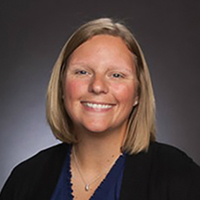
Director, GCRL
228.872.4278
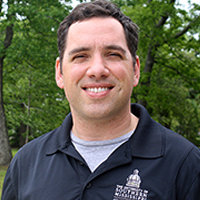
Dr. Robert Leaf
Associate Professor
Director, School of Ocean Science and Engineering
Associate Director, School of Ocean Science and Engineering, Coastal Sciences
228.872.4296
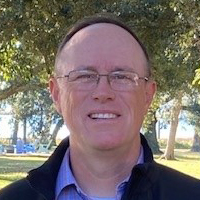
Eric W. Hook
Assistant Director, GCRL Finance Administration
228.818.8814
 Luke Applewhite
Luke Applewhite
Director, Physical Plant
228.818.8019
lucas.applewhiteFREEMississippi
Pam Moeller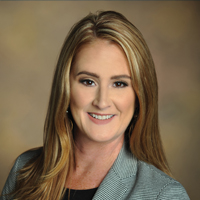
Director, External Relations
228.818.8847
Tiffany McNeese
Director, Vessel Operations
228.872.4277
tiffany.mcneeseFREEMississippi
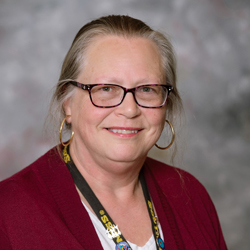 Joyce M. Shaw, MA, MLIS
Joyce M. Shaw, MA, MLIS
Head Librarian & Professor
228.872.4213
Sara LeCroy
Museum Curator
228.872.4238
Binnaz Bailey
Environmental, Health and Safety Officer
228.818.8029
Martha Brown 
Housing & Conference Services Manager
228.818.8824
University Police Department
601.266.4986
Halstead Site
703 East Beach Drive, Ocean Springs, MS 39564
The 50-acre Halstead site is the original location of GCRL, as established by the State Legislature in 1948. Numerous academic, research and administrative units are located at the Halstead site, including GCRL’s Dormitory, Dining Hall, Gunter Library, and classroom facilities (including the Field Studies Building) which support the long-running Summer Field Program. The harbor at this location is home to the Miss Peetsy B, and its boat launch supports USM small boat research and academic operations.
DRIVING DIRECTIONS
- If you are traveling east on I-10, take the Ocean Springs Exit #50 and follow Highway 609 (Washington Avenue) about three miles to U.S. 90. Turn left on U.S. 90; right on Bechtel Boulevard (4th traffic light, including the fire station traffic signal); cross the railroad tracks; left on Government Street (a 4-way stop); right on Halstead Road (a 3-way stop); go south to the end of Halstead Road; the GCRL entrance is on the left.
- If you are traveling west on I-10, take the Ocean Springs Exit #57; turn left (south) and follow Hwy. 57 to U.S. 90. Turn right on U.S. 90. Go about 4.5 miles (7th traffic light) to Hanley Road. Turn left on Hanley; cross railroad tracks; right on Government (a 4-way stop); left on Halstead (a 3-way stop); go south to the end of Halstead Road; GCRL entrance is to the left.
Cedar Point Site
300 Laurel Oak Drive, Ocean Springs, MS 39564
The 224-acre Cedar Point site is east of the Halstead site and adjacent to the Gulf Islands National Seashore’s Davis Bayou Area. The property was donated to USM by the Jackson County Board of Supervisors in 1995, initially for expansion of marine aquaculture research at GCRL. Cedar Point includes numerous facilities supporting the Thad Cochran Marine Aquaculture Center, and the Research Building there is home to several SOSE faculty. Recovery from Hurricane Katrina damages in 2005 has occurred primarily at this location, with completion of the Marine Education Center in 2018, the Toxicology Building in 2017, and the GCRL Physical Plant facility in 2013.
DRIVING DIRECTIONS
From the GCRL Halstead Campus, turn right and go 1.4 miles north on Halstead Road to Government Street and turn right. After 2.0 miles, turn right on Knapp Road. Take the first right onto VFW Road. Take the first left onto Park Road. In 0.2 miles, the GCRL entrance is to the left at Laurel Oak Drive.
- If you are traveling east on Highway 90, just after passing Ocean Springs Hospital, turn right (south) at the traffic light onto Park Road at the Gulf Islands National Seashore entrance. (The road on the north side of the intersection is Ocean Springs Road.) Continue 1.4 miles and turn left on Laurel Oak Drive. Continue 0.2 miles and turn right into the parking area.
- If you are traveling west on Highway 90, continue 1.1 miles past Wal-Mart and turn left (south) at the traffic light on Gulf Islands National Seashore Parkway, just before reaching Ocean Springs Hospital. (The road on the north side of the intersection is Ocean Springs Road.) Continue 1.4 miles, and the GCRL entrance is to the left at Laurel Oak Drive.
Point Cadet
Point Cadet in Biloxi serves as a research vessel and teaching site for GCRL and is the homeport to the R/V Jim Franks and the R/V Tommy Munro.